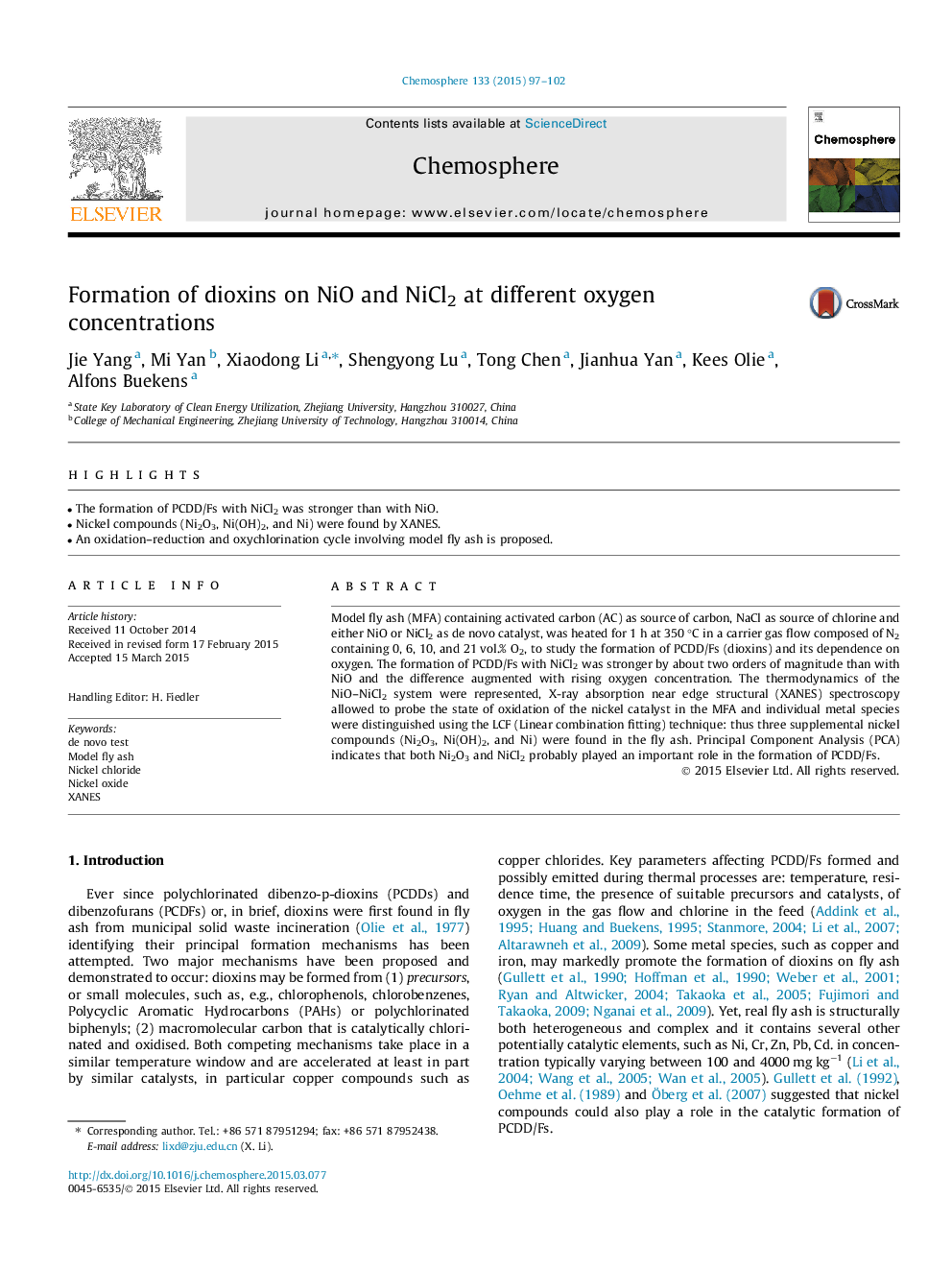| کد مقاله | کد نشریه | سال انتشار | مقاله انگلیسی | نسخه تمام متن |
|---|---|---|---|---|
| 4408309 | 1618838 | 2015 | 6 صفحه PDF | دانلود رایگان |

• The formation of PCDD/Fs with NiCl2 was stronger than with NiO.
• Nickel compounds (Ni2O3, Ni(OH)2, and Ni) were found by XANES.
• An oxidation–reduction and oxychlorination cycle involving model fly ash is proposed.
Model fly ash (MFA) containing activated carbon (AC) as source of carbon, NaCl as source of chlorine and either NiO or NiCl2 as de novo catalyst, was heated for 1 h at 350 °C in a carrier gas flow composed of N2 containing 0, 6, 10, and 21 vol.% O2, to study the formation of PCDD/Fs (dioxins) and its dependence on oxygen. The formation of PCDD/Fs with NiCl2 was stronger by about two orders of magnitude than with NiO and the difference augmented with rising oxygen concentration. The thermodynamics of the NiO–NiCl2 system were represented, X-ray absorption near edge structural (XANES) spectroscopy allowed to probe the state of oxidation of the nickel catalyst in the MFA and individual metal species were distinguished using the LCF (Linear combination fitting) technique: thus three supplemental nickel compounds (Ni2O3, Ni(OH)2, and Ni) were found in the fly ash. Principal Component Analysis (PCA) indicates that both Ni2O3 and NiCl2 probably played an important role in the formation of PCDD/Fs.
Journal: Chemosphere - Volume 133, August 2015, Pages 97–102